Concatenate Two Matrices in R (2 Examples)
In this tutorial, I’ll illustrate how to append two matrices in the R programming language.
The tutorial consists of these contents:
Here’s how to do it.
Creation of Example Data
Let’s first create some example data:
mat1 <- matrix(1:12, ncol = 3) # Create first example matrix mat1 # Print first example matrix
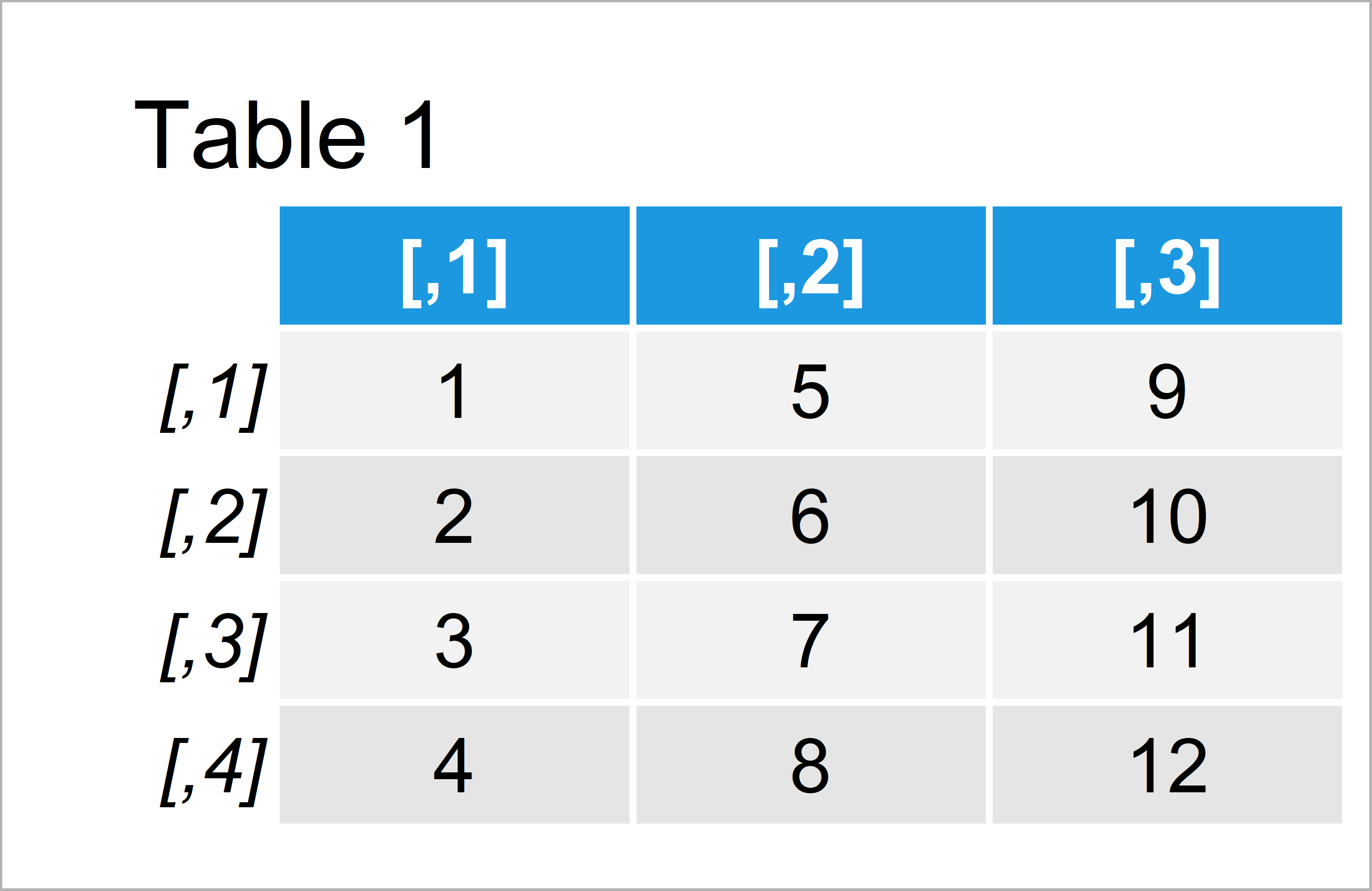
As you can see based on Table 1, the first example data is a matrix and consists of four data points and three columns.
mat2 <- matrix(21:35, ncol = 3) # Create second example matrix mat2 # Print second example matrix
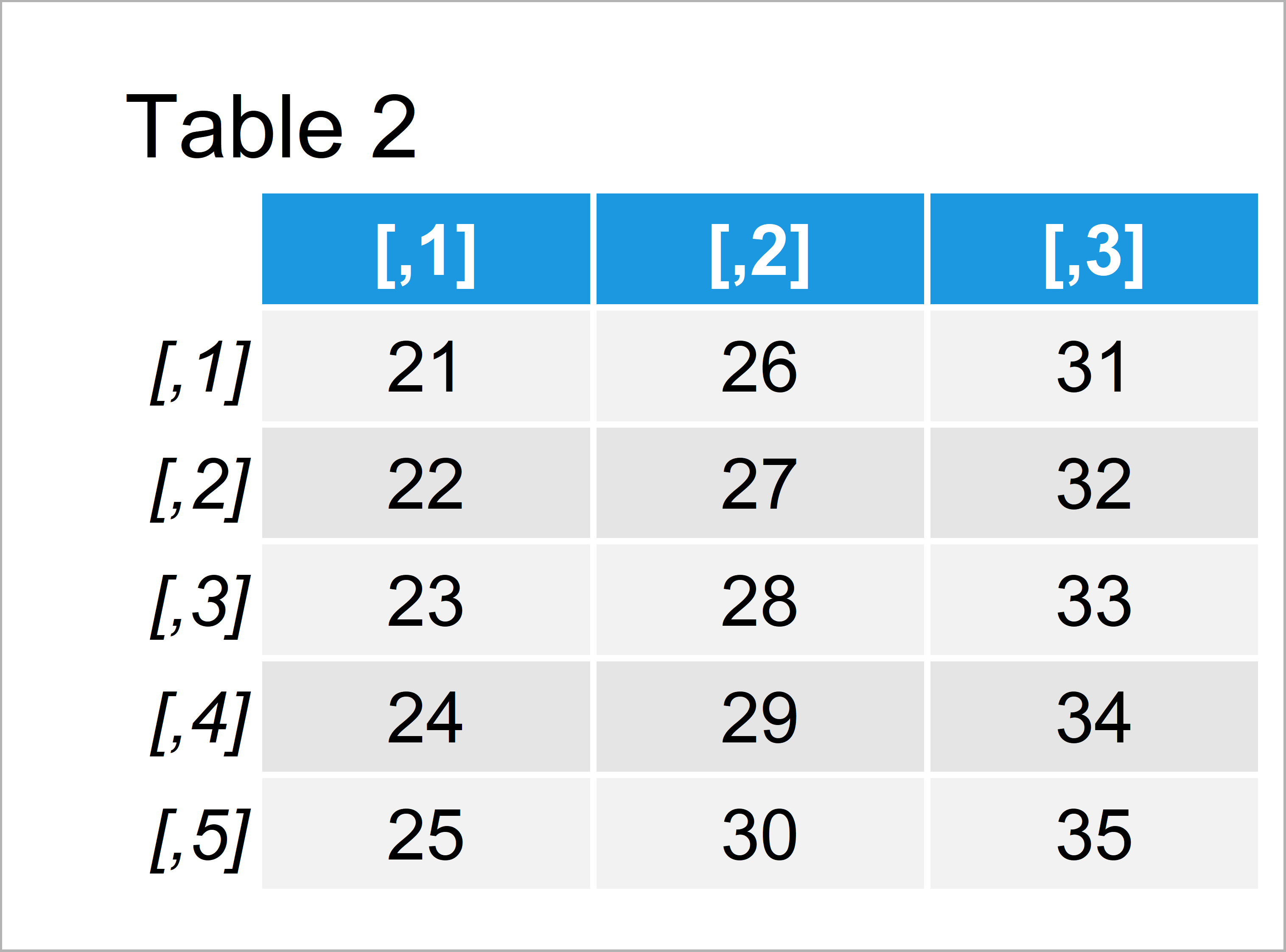
As shown in Table 2, we have created another example matrix by running the previous R syntax.
Example 1: Append Two Matrices Using rbind() Function
In this example, I’ll explain how to concatenate the rows of the second matrix below the rows of the first matrix using the rbind function.
Consider the following R code:
mat_combined1 <- rbind(mat1, mat2) # Apply rbind function mat_combined1 # Print concatenated matrix
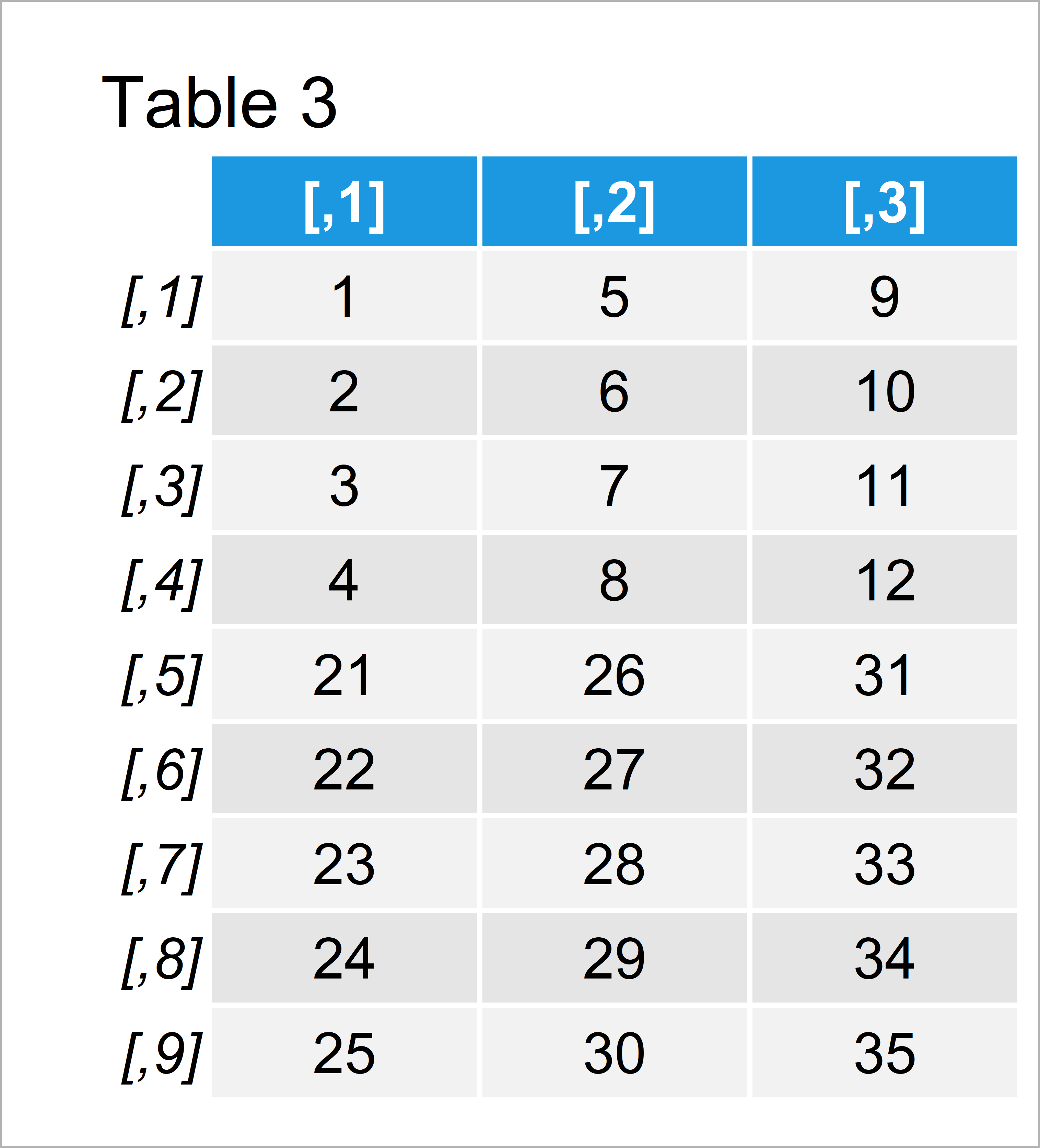
In Table 3 it is shown that we have created a new matrix object containing the rows of mat1 and mat2 by running the previous code.
Example 2: Append Two Matrices with Different Number of Columns Using rbind.fill.matrix() Function
This example explains how to bind two matrices with different columns in R.
First, we have to create another example matrix with more columns:
mat3 <- matrix(41:56, ncol = 4) # Create third example matrix mat3 # Print third example matrix
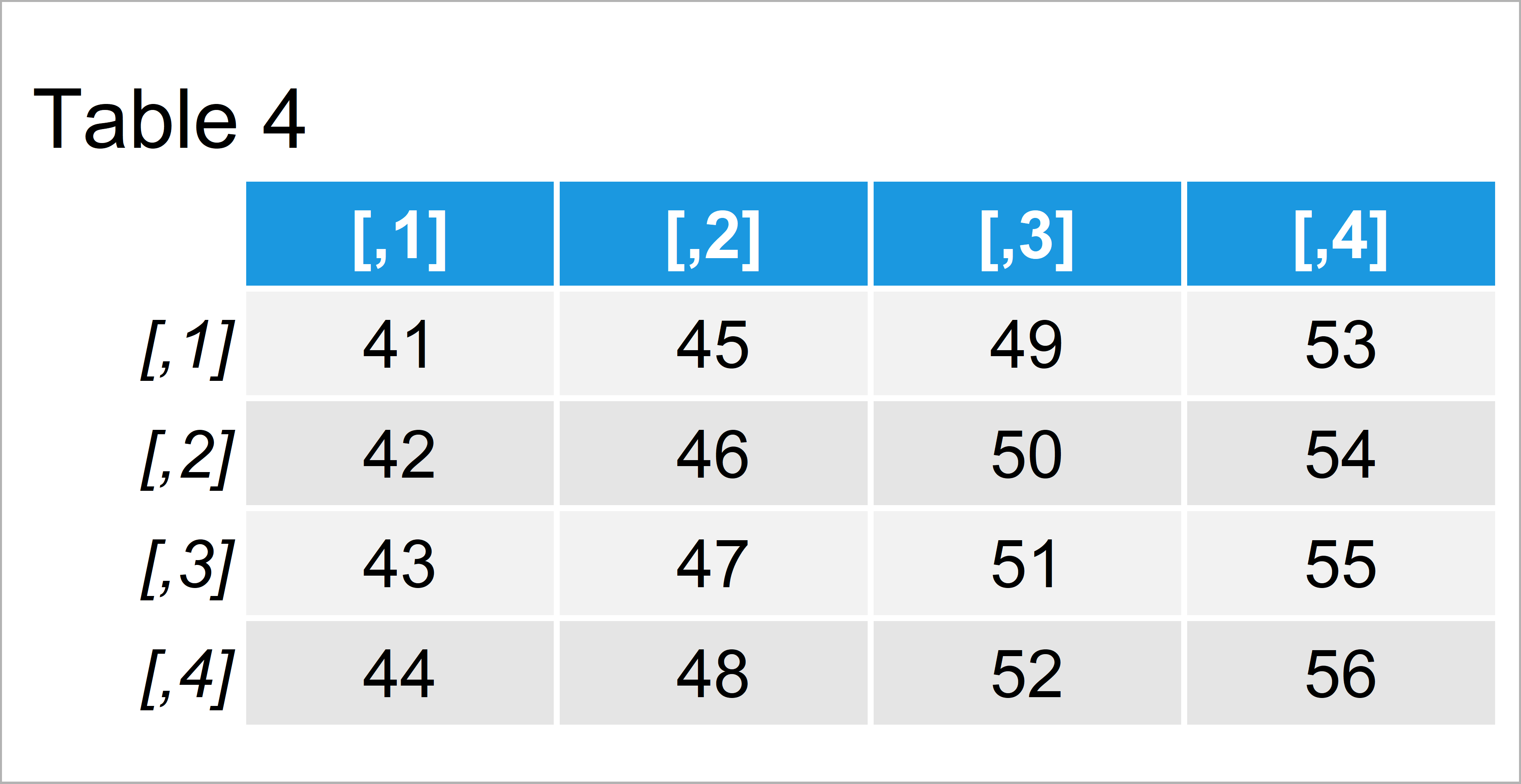
The output of the previous code is shown in Table 4: We have constructed a matrix with four rows and four columns. Note that our first example matrix mat1 contains only three variables.
Let’s try to join the rows of our two matrices mat1 and mat3 using the rbind function:
rbind(mat1, mat3) # rbind function leads to error # Error in rbind(mat1, mat3) : # number of columns of matrices must match (see arg 2)
As you can see, the previous R code has returned an error message to the RStudio console.
So how to fix this problem?
We first have to install and load the plyr package:
install.packages("plyr") # Install plyr package library("plyr") # Load plyr package
Now, we can apply the rbind.fill.matrix function of the plyr package to merge the rows of our two matrices:
mat_combined2 <- rbind.fill.matrix(mat1, mat3) # Apply rbind.fill.matrix function mat_combined2 # Print concatenated matrix
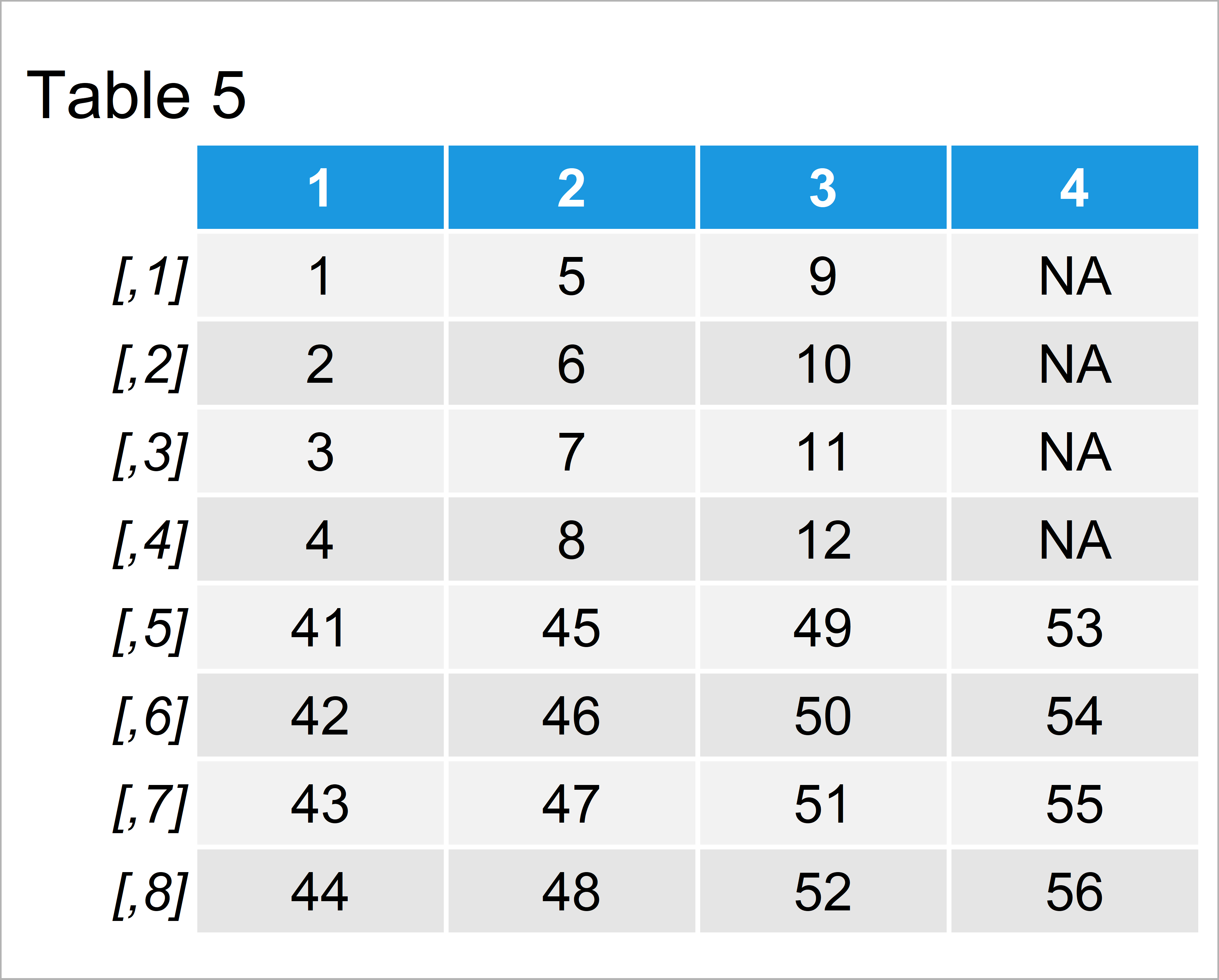
The output of the previous code is shown in Table 5 – A new matrix consisting of the rows of mat1 and mat3.
Note that the fourth column contains NA values (i.e. missing data) in the rows that come from the input matrix mat1.
Video & Further Resources
Do you need further explanations on the R programming codes of this article? Then you may want to have a look at the following video of my YouTube channel. In the video, I’m illustrating the R programming code of this article in a live session:
Furthermore, you might want to have a look at the other tutorials on my website:
- rbind Function in R
- Combine Two Data Frames with Different Variables by Rows
- bind_rows & bind_cols R Functions of dplyr Package
- Add New Row to Data Frame in R
- All R Programming Tutorials
Summary: In this article, I have illustrated how to concatenate two matrix objects in the R programming language. Let me know in the comments section below, in case you have additional questions and/or comments.






